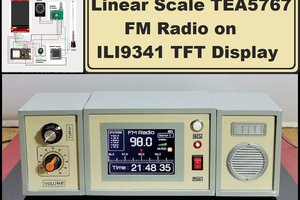In short, the Si4732 and Si 4735 chip support FM, AM, and SSB (USB & LSB) modulation and RDS on FM. Unfortunately in this case I use SI4730-B20 based Radio module labeled “NE928-10A V:01” which DOES NOT SUPPORT LW, SW, and FM/RDS.
As soon as I receive the Si4732 chip from AliExpress, I will replace the current board with this chip and without any changes in the software, the complete features will be obtained. I hope to present that soon.
As I mentioned before, the device is relatively simple to build and contains the following components:
- ESP32 microcontroller board
- SI4730 radio module
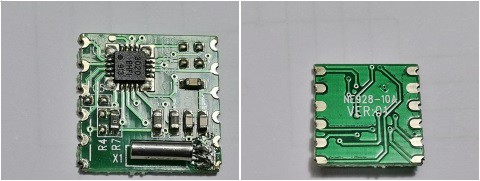
- 2.8 inch TFT colour display with Touch screeen
- Small D-Class power amplifier board
- Lithium Battrey 3.7 Volts
- Lithium battery charger
- Upconverter board 3.7 to 5V
- Rotary encoder
- and Potentiometer
This time I tried to make the device as simple as possible to build so some parts of the original scheme are omitted, such as input filters, "mute" circuit, buzzer ...
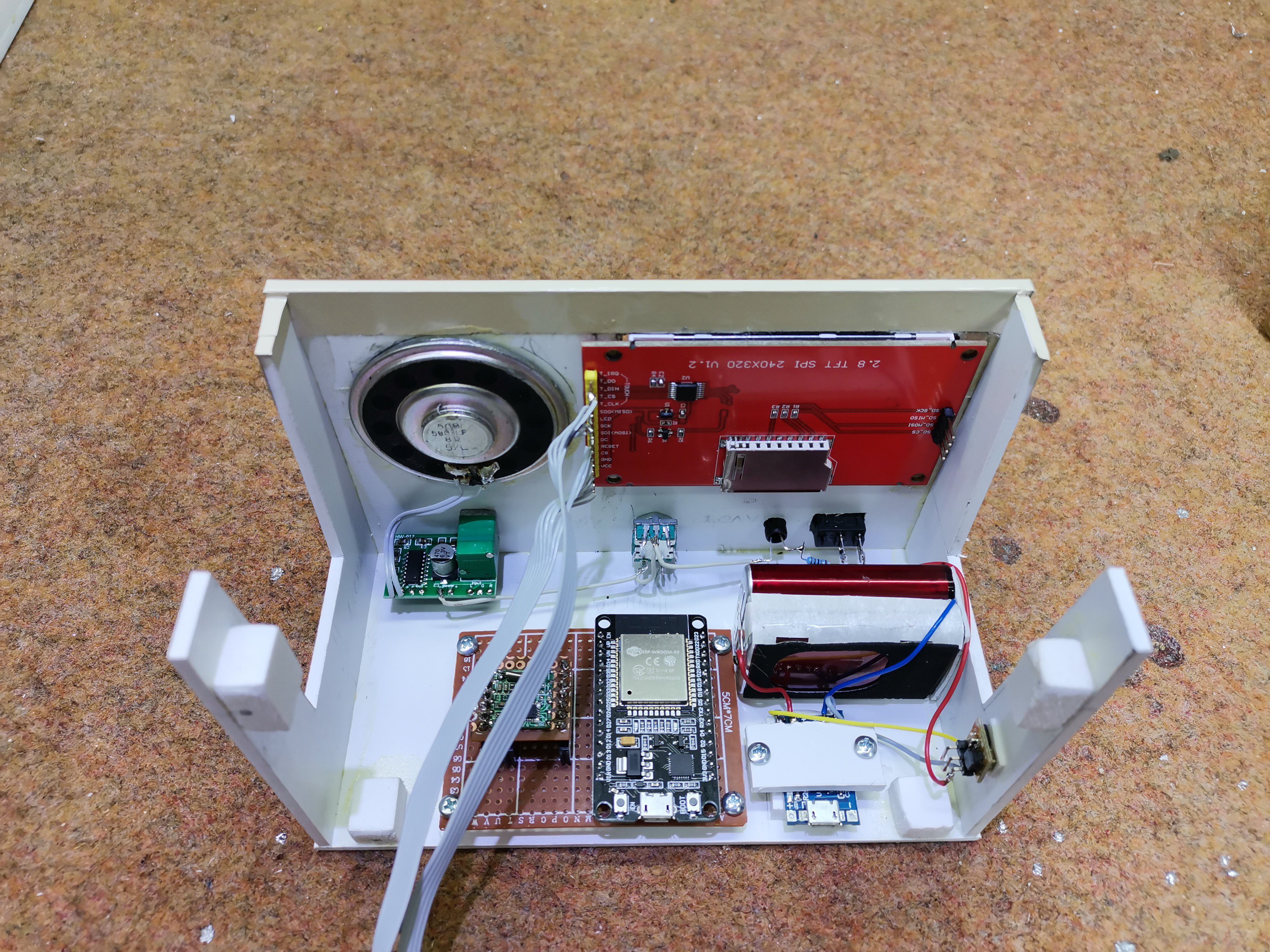
Although the volume can be adjusted with the encoder and touch, the option to do it manually with a potentiometer is very practical. The receiver looks Impressive with the color TFT display and also does not lag behind at all with the quality of reception in all bands.
The software for this receiver is an integral part of Ricardo Lima Caratti's Si4735 library. The code is in the: examples - PU2CLR Si4735 - Si47xx_KITS - THIAGO_LIMA - Si473x_TFT_TOUCH_THIAGO_ORIGINAL. Attached below is a modified TFT_eSPI library for this project, so that compilation should go smoothly.In the video you can see several versions of software with different screen layouts.
For the suggestions and corrections during the development of this project please visit Facebook groups:"Si47XX for Radio Experimenters" :
https://www.facebook.com/groups/532613604253401
and "SI47XX para radioescutas"
https://www.facebook.com/groups/1121785218031286
The radio has a simple graphical interface so that you can quickly and easily access all the options:
- volume button
- Mute function
- Direct input frequency button
- Next screen with seek up and seek down buttons
- Automatic gain control with set the attenuation value
- RDS On/Off button
- Band select MW
-next Mode selection
- and Filter selection
Also on the display, we have only necessary information like Frequency, RSSI value, Signal to Noise ratio, etc. Unfortunately, the video is of poor quality due to the poor camera features. In reality, the content of the screen is crystal clear. Finally, the radio is mounted in a suitable box made of PVC and coated with self-adhesive wallpaper
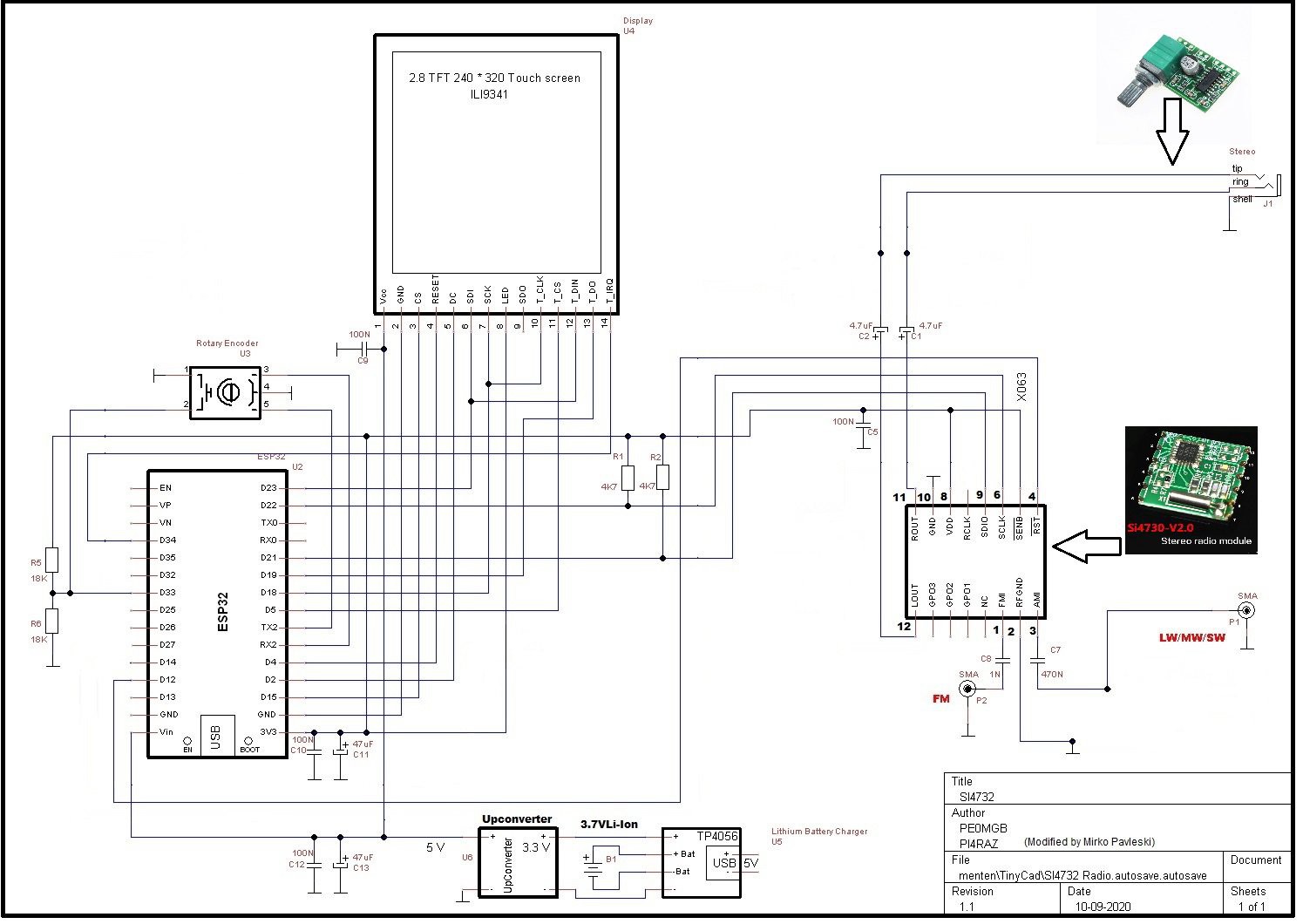
 mircemk
mircemk

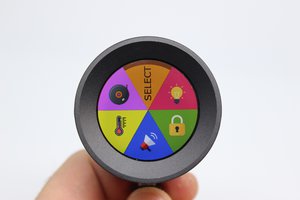
 Dimitar
Dimitar